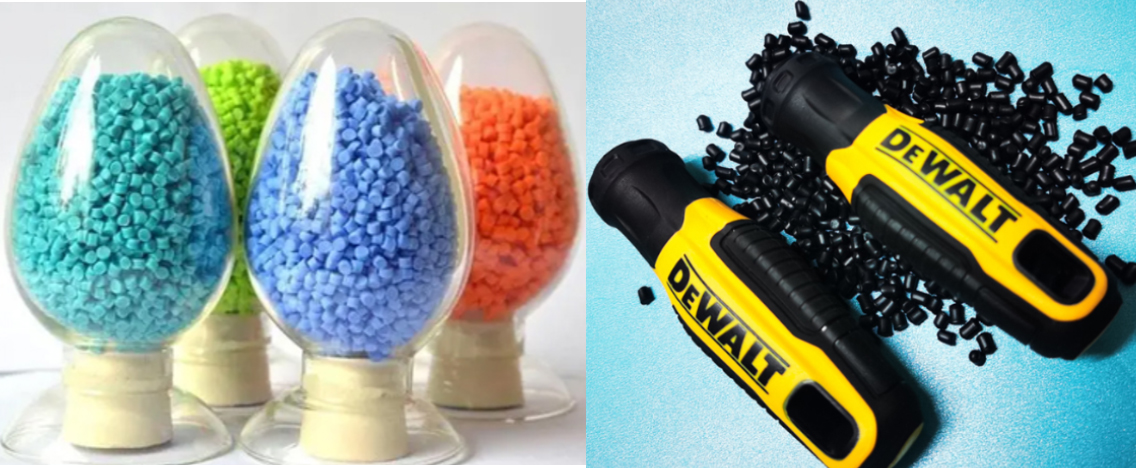TPE coating involves adhering TPE soft adhesive material to other materials. Common processing methods include using a two - color injection molding machine or a general injection molding machine with a rubber mold, typically in two - step injection molding processes.
Compatibility: It's crucial for TPE to be compatible with the coated substrate. For instance, when coating PP, choose TPE with SEBS as the base and good PP - compatibility. Their similar solubility parameters help form a good bonding layer. When coating PC, use a TPE mixture suitable for PC to ensure effective integration during injection and enhance coating firmness.
Hardness: TPE coating materials have a Shore hardness range of A10 - 90. For knife and comb handles, TPE with Shore A 40 - 60 is often chosen for a comfortable grip. For baby products needing a softer touch, ultra - soft TPE around Shore A 30 may be selected.
Functional Characteristics: Different products demand different TPE functional traits. Sports equipment grips need TPE with good resilience and wear resistance. Consumer electronics shells require TPE with aging and yellowing resistance. Medical device adhesives must be non - toxic, odorless, and meet medical - grade standards.

Application Industry: In daily necessities like luggage grips, TPE offers a soft grip and boosts product aesthetics and durability. In consumer electronics such as phone and tablet cases, it provides anti - slip and cushioning protection.
Environmental Protection Requirements: With growing environmental awareness, TPE must meet higher environmental standards. Food - contact TPE needs FDA certification. In the EU, TPE must comply with REACH and ROHS, free from harmful substances like phthalates and halogens.
Injection Molding Temperature: Usually between 160°C and 220°C, but varies by TPE formulation and substrate. For example, it's 170°C - 190°C for PP - coated materials, 200°C - 220°C for ABS - coated materials, 220°C - 240°C for PC - coated materials, and can be reduced to 130°C - 160°C for ultra - soft TPE.
Injection Pressure: Generally 30MPa - 80MPa, adjusted by factors like material hardness, product shape, and mold structure. Complex or thin - walled products, or high - hardness TPE, need higher pressure; simple or thick - walled products, or soft TPE, can use lower pressure.
Injection Speed: Should be moderate. Too fast may cause jetting and surface defects; too slow leads to insufficient filling. Multi - level injection speed control is common, using a faster speed initially and slowing down near full cavity.
Drying Treatment: TPE materials need drying at 60°C - 80°C for 1 - 2 hours to remove moisture, reducing water marks and bubbles and improving product quality.
Release Treatment: Select appropriate release agents like silicone oil or wax. But use the right amount to avoid affecting adhesion. For complex - structure products, increase the demoulding angle (usually not less than 1.5° - 2°) for smooth demoulding.
Appearance Inspection: Visually check for bubbles, flow marks, lack of glue, flash, and shrinkage. The surface should be smooth, flat, and uniformly colored. High - appearance - requirement products may need surface roughness testing.
Dimensional Accuracy Testing: Use calipers and micrometers to measure key product dimensions, ensuring they meet design requirements within the allowable tolerance.
Adhesion Test: Employ tensile and peel tests. In a 90° peel test, TPE should adhere tightly to the substrate, break within the TPE material during peeling, and meet adhesion force requirements.
Physical Properties Test: Test product hardness, tensile strength, tear strength, and resilience to meet design and standard requirements.